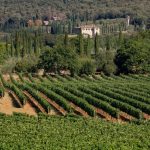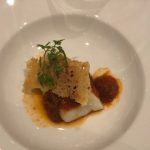The Palio of Siena is known all over the world as a historical display, a horse race held in Piazza del Campo where, twice a year, 10 ‘contradas’ challenge one another, on 2nd July (Palio of Madonna of Provenzano) and 16th August (Palio of Assunta). Anyway, not everyone knows (obviously apart from the Sienese) that the palio, or drappellone, called cencio by the Sienese, represents the trophy which is to awarded to the winning Contrada.
What is the drappellone
The drappellone consists of a painting made on silk that has got the form of a long and narrow rectangle. It is supported by a black and white halberd staff, with a silver plate over it and two black and white plumes that fall down sideways.. Every year the Sienese municipality assigns the Drappellone to an artist, by open competition or even directly.
Even if the artist is free to express himself, he has to respect some strict rules: each Palio must contain the symbols of the various governments that have run Siena in different times (from the Grand Duchy of Lorraine to the Grand Dukes of Tuscany, from the Savoy coat of arms until that of the Republic) as well as a precise iconography that provides for some holy symbols. About one week before every Palio, the Drappellone is shown publicily in Piazza del Campo, so that the large audience that is always present there, can approve (or hiss) it. At the end of every race, the Palio is awarded to the winning Contrada that keeps it in its own museum.


Short history
Il Drappellone più antico ancora conservato è datato 1719 ed appartiene alla Contrada dell’Aquila.
The most ancient Drappellone still preserved nowadays dates back to 1719 and belongs to the Aquila Contrada.
For about two and a half centuries, the Palio had been represented in a very standard way because it was not considered as a work of art, so that the Sienese called the various drappelloni palii panforteschi, which meant that they were more suitable to wrap up the panforte (a typical Sienese cake) than being hung on the wall.
Only in 1949 the Rules of Palio imposed some strict iconographic rules and its production was entrusted both to local and world-famous artists, leaving them completely free to use their own style.
A turning point was reached with an extraordinary Palio on 21 September 1969, when the Sienese artist Mario Bucci, who was entrusted to realize the cencio, gave a modern mark to his work. From that moment on, the various Drappelloni were entrusted to artists who were famous both in Italy and all over the world (Guttuso, Botero, Luzzati, …).
The Palio of Siena is definitely a good opportunity not only to be present at a historical display, but also for a full immersion into the local and international art and, why not, into the wine-and- food wonderful specialities of the Sienese territory. So, come and visit us and then, after the Palio, we invite you to a tasting in the Sienese style …We are waiting for you!









